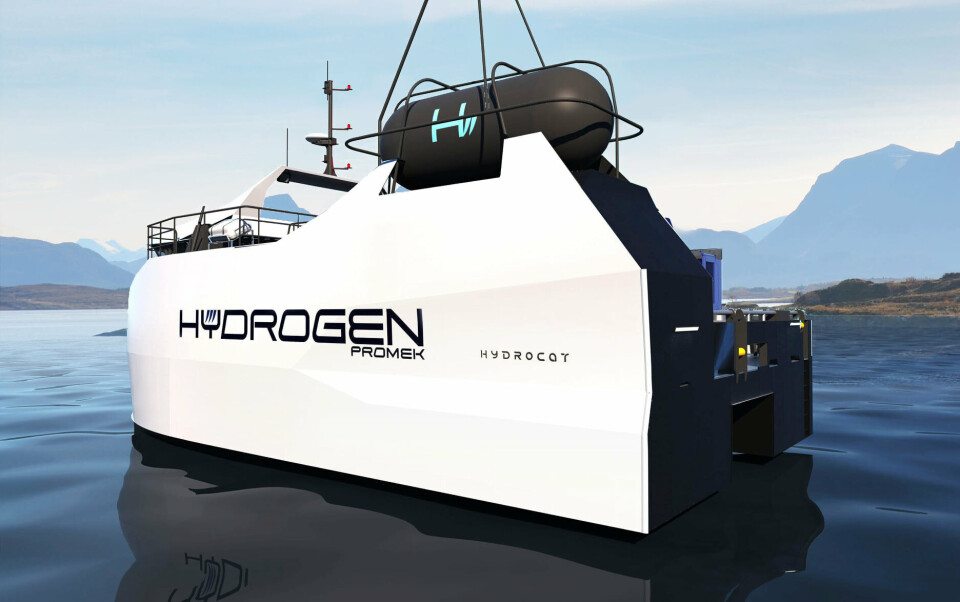
Workboat builder looks to hydrogen as future fuel
A Norwegian boat builder is looking for a partner to further its ambition of producing a first hydrogen-fuelled workboat for the fish farming industry.
Promek, based at Smøla in the Møre og Romsdal region, has been working on a feasibility study of using hydrogen since last summer, and now hopes to take the project further.
Chief executive Arild Tjelle told Skipsrevyen (Ship Review) website that the trends in both Norway and Europe show that zero-emission vessels are the future, and that they will probably use hydrogen. Ships and shipping account for a large proportion of emissions in Norway, and politicians have decided on various types of measures that will provide incentives to reduce emissions in this sector as well.

Fuel cells
“Then we will be able to offer this to our customers,” said Tjelle, whose company’s clients include Mowi, SalMar, Grieg Seafood, Stolt Sea Farm, Måsøval and other fish farmers.
Promek’s feasibility study looked at the use of hydrogen in connection with fuel cells, which produce electrical power out of the hydrogen. The electricity then drives electric motors that provide propulsion.
“The study shows that we may be able to build a hydrogen vessel. There are several things that are unresolved, but we have the rough concept in place. Laws and regulations for the approval of such vessels are not yet clear as of today. In addition, it is about logistics of getting the hydrogen to the vessels,” Tjelle pointed out.
He thinks it is therefore a “chicken and egg discussion”.
National plan
“You do not get producers of hydrogen and hydrogen stations until you have someone who can buy it. And you do not get someone to build hydrogen vessels until you have someone can fill them up.
“There are solutions where you can produce hydrogen locally, such as Asko in Trondheim which has its own factory that produces hydrogen, based on, among other things, solar cells, to run its car fleet. But it is hoped that this will be addressed more by central authorities. We need a national plan and investment in this area for it to have the desired effect,” Tjelle said.
He made it clear that Promek does not have the financial muscle to be able to produce such a vessel at its own expense. Therefore, it is now dependent on finding a customer who will collaborate on the project.
“Promek is interested in a collaboration with a customer for the project to build a prototype. We are happy to talk about opportunities in connection with such a project,” he concluded.























































